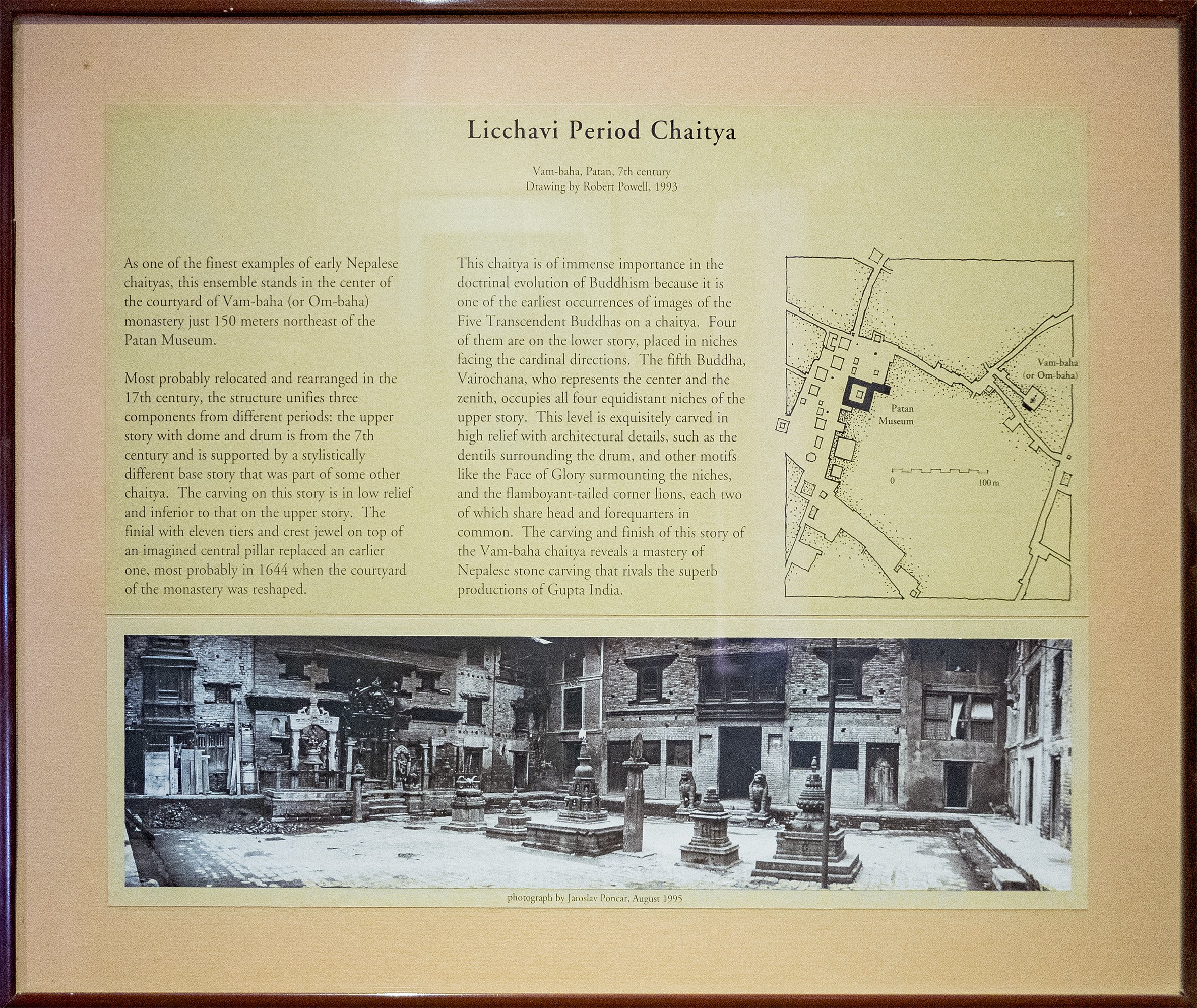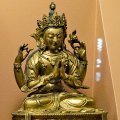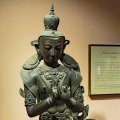Patan Museum (Nepal): photo 96
Photo 96 of 212 in Gallery: Patan Museum (Nepal)

Image title: Licchavi Period Chaitya
Description of the photo
Licchavi Period Chaitya [Vam-baha, Patan, 7th century Drawing by Robert Powell, 1993].
As one of the finest examples of early Nepalese chaityas, this ensemble stands in the center of the courtyard of Vam-baha (or Om-baha) monastery just 150 meters northeast of the Patan Museum. Most probably relocated and rearranged in the 17th century, the structure unifies three components from different periods: the upper story with dome and drum is from the 7th century and is supported by a stylistically different base story that was part of some other chaitya. The carving on this story is in low relief and inferior to that on the upper story. The finial with eleven tiers and crest jewel on top of an imagined central pillar replaced an earlier one, most probably in 1644 when the courtyard of the monastery was reshaped.
This chaitya is of immense importance in the doctrinal evolution of Buddhism because it is one of the earliest occurrences of images of the Five Transcendent Buddhas on a chaitya. Four of them are on the lower story, placed in niches facing the cardinal directions. The fifth Buddha, Vairochana, who represents the center and the zenith, occupies all four equidistant niches of the upper story. This level is exquisitely carved in high relief with architectural details, such as the dentils surrounding the drum, and other motifs like the Face of Glory surmounting the niches, and the flamboyant-tailed cornet lions, each two of which share head and forequarters in common. The carving and finish of this story of the Vam-baha chaitya reveals a mastery of Nepalese stone carving that rivals the superb productions of Gupta India.
[Photograph by Jaroslav Poncar, August 1995]
Gallery information:
The Patan Museum is located on the Durbar square of Patan (Lalitpur/Lalitapura, Kathmandu, Nepal) which is associated Keshav Narayan Chowk (Keshavnarayan)—a form of Lord Vishnu. Being listed as a World Heritage Site, the whole of Durbar square is filled with exquisite temples, sculptures and other ancient structures, of which the ancient history history can be traced to the Malla Kings of Lalitpur. It is an important site for both Buddhism and Hinduism.
Photo details:
Date: 2019-12-02
Camera: SONY ILCE-6400
Exposure: 1/160
Aperture: f/3.5
ISO: 3200
Focal length: 18mm
High resolution:
Download file
Size: 3.07 MB
Resolution: 2375 x 2000
© Photograph by Gabe Hiemstra.
License: CC BY-NC-ND 4.0

